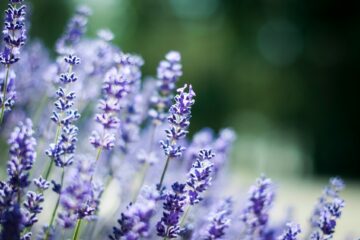If you’re like me, you’ve been thinking about how to make your garden more wildlife friendly. Making a wildlife friendly garden can be a fun way to help the environment and get closer to nature. The good news is that there are plenty of ways that you can make your garden better for animals without making it less enjoyable for people!
Make a wildlife food plot.
Wildlife food plots are a great way to attract birds and other animals to your garden. They can be planted with seeds and plants that are attractive to wildlife, such as sunflowers, buckwheat, sorghum and millet. These will provide food for birds in winter when natural food sources are scarce.
There are many benefits of planting a wildlife friendly garden:
- It’s good for the environment because it helps prevent pests from destroying crops by attracting insects that prey on them instead;
- It provides habitat for local wildlife like birds and insects;
- You’ll have fun watching all the different species in your garden!
Provide shelter.
Provide shelter for birds, insects and mammals.
- Build a birdhouse. You can find plans for building your own on websites like [https://www.instructables.com/id/Make-a-Birdhouse-with-Plans/.].
- Provide a place for insects to overwinter or hibernate: piles of leaves or bark provide good habitat during the winter months; hollow logs are ideal shelters for many species of insects that emerge from their dormant state in springtime; rotting logs provide homes for slugs and snails (which will eat garden pests); hollow stumps can be used by mice as nests or dens; rock crevices are also good places for rodents to build their homes
Plant native plants.
Planting native plants is one of the easiest ways to create a wildlife friendly garden. Native plants are adapted to the local climate and environment, so they’re more resistant to pests and diseases than non-native species. They also provide food for local wildlife, making them an important part of the food chain in your backyard or community park. Planting natives can help you attract birds, butterflies and other animals that may not be able to live in your area otherwise–and if you have any children around (or even just a spouse), then this will make for some great outdoor entertainment!
To get started with planting natives: first determine what type of habitat you want to create–do you want something open or dense? Do you want water features like ponds or streams? Then look at which plants would be best suited for those conditions; our website has lots of information about different types of native flowers/shrubs/trees etc., so take some time browsing through all these options before deciding what kind of garden space suits both yourself as well as whatever critters might call it home someday soon!
Leave some bare ground.
Leave some bare ground.
Bare patches of soil are important for wildlife to thrive, especially insects, birds and reptiles. Leave some areas of your garden to go wild and leave the grasses to grow long and tall–this will provide shelter for small mammals who need somewhere to hide from predators like cats or dogs.
Be prepared for pests, but don’t use chemicals on your wildlife garden.
When you’re planning your wildlife-friendly garden, it’s important to be prepared for pests. You can use natural methods to control them without the use of pesticides or herbicides. These include:
- Using beneficial insects to control pests (e.g., ladybugs eat aphids)
- Using traps for small animals that can damage plants (e.g., Havahart cage traps)
- Using a combination of these methods
Look for ways to reduce your wildlife garden’s carbon footprint.
- Use organic fertilizer. Organic fertilizer is a great way to reduce your garden’s carbon footprint, as it doesn’t rely on fossil fuels to produce nitrogen and other nutrients for plants. You can make your own compost by collecting food scraps and yard waste in a bin (or even just an old garbage can) and letting them decompose over time.
- Use rainwater for watering plants. If you live in an area where there are heavy rains during the summer months, consider installing a rain barrel to collect water that would otherwise be wasted! This will reduce your reliance on mains supply and also help protect local streams from pollution caused by runoff from impermeable surfaces such as tarmac roads or concrete driveways which absorb stormwater rather than allowing it to seep through naturally into the ground below – causing erosion along riverbanks etcetera…
A wildlife friendly garden is a good thing to have even if it takes some work to maintain it
A wildlife friendly garden is a good thing to have even if it takes some work to maintain it. Your garden can:
- help you relax, by providing a place outside where you can enjoy nature without having to go far from home
- teach you about the natural world around you and give insight into how plants grow, what animals eat them, and so on
- provide food for people and animals alike (if they’re growing in an area where there are no pesticides)
Plant flowers, shrubs and perennials that flower at different times of the year.
- Plant flowers, shrubs and perennials that flower at different times of the year.
- Choose flowers that attract bees and butterflies.
- Choose shrubs and perennials with berries or seeds that birds can eat.
- Consider planting a variety of plants in your garden, so it’s always providing food for wildlife throughout the year!
Provide food and water for wildlife in your garden, especially in winter and summer when natural food sources are scarce.
- Provide food and water for wildlife in your garden, especially in winter and summer when natural food sources are scarce.
- Provide habitat for pollinators by planting a variety of flowering plants that will provide nectar and pollen throughout the year.
- If you live near a pond or stream, consider creating an aquatic habitat by adding boggy areas with shallow water; this will provide shelter as well as food sources such as water insects (tadpoles) and algae on which tadpoles feed.
Use wildlife-friendly fencing around the garden to keep animals out if you want to protect some plants from being eaten by deer or rabbits, or to keep pets out of a bed with sensitive plants.
- Use wildlife-friendly fencing around the garden to keep animals out if you want to protect some plants from being eaten by deer or rabbits, or to keep pets out of a bed with sensitive plants.
- A fence made of chicken wire is an effective way to keep rabbits and deer out of your garden. The mesh should be small enough to keep rabbits out, but large enough for birds to fly through, which allows them access into your yard.
Create an environment that encourages birds to visit and eat insects like aphids off your plants. Bird feeders can help attract birds, and bird baths give them a place to clean off after eating messy insects.
- Bird feeders. These are a great way to attract birds, especially if you want to watch them up close.
- Bird baths. Birds need water to clean themselves after eating insects, so a bird bath will give them somewhere convenient and safe to do this in your garden.
- Wildlife friendly fencing around the perimeter of your garden or yard can help prevent cats from entering and hunting small animals such as birds and mice (which may also be attracted by your garden). You might also consider putting up netting over fruit trees during fruiting season so that fruit doesn’t fall on the ground where it could be eaten by wildlife instead of being harvested by humans!
With a little work, you can create a wildlife-friendly garden that will attract birds, bees and other beneficial insects. You’ll also be able to enjoy watching them from your window or deck while sipping on a glass of wine!
Want to reach your fitness goals?
FitWorld provides a free to use online fitness journal. Record your cardio, strength and flexibility training and smash those fitness tragets!
Sign up now

